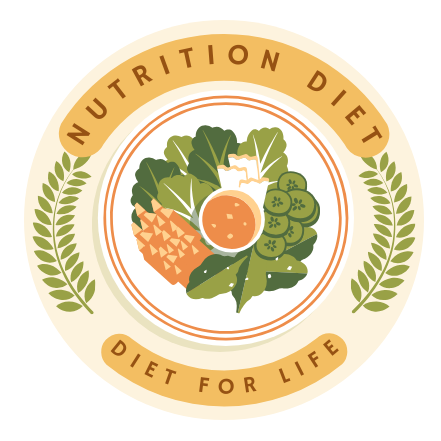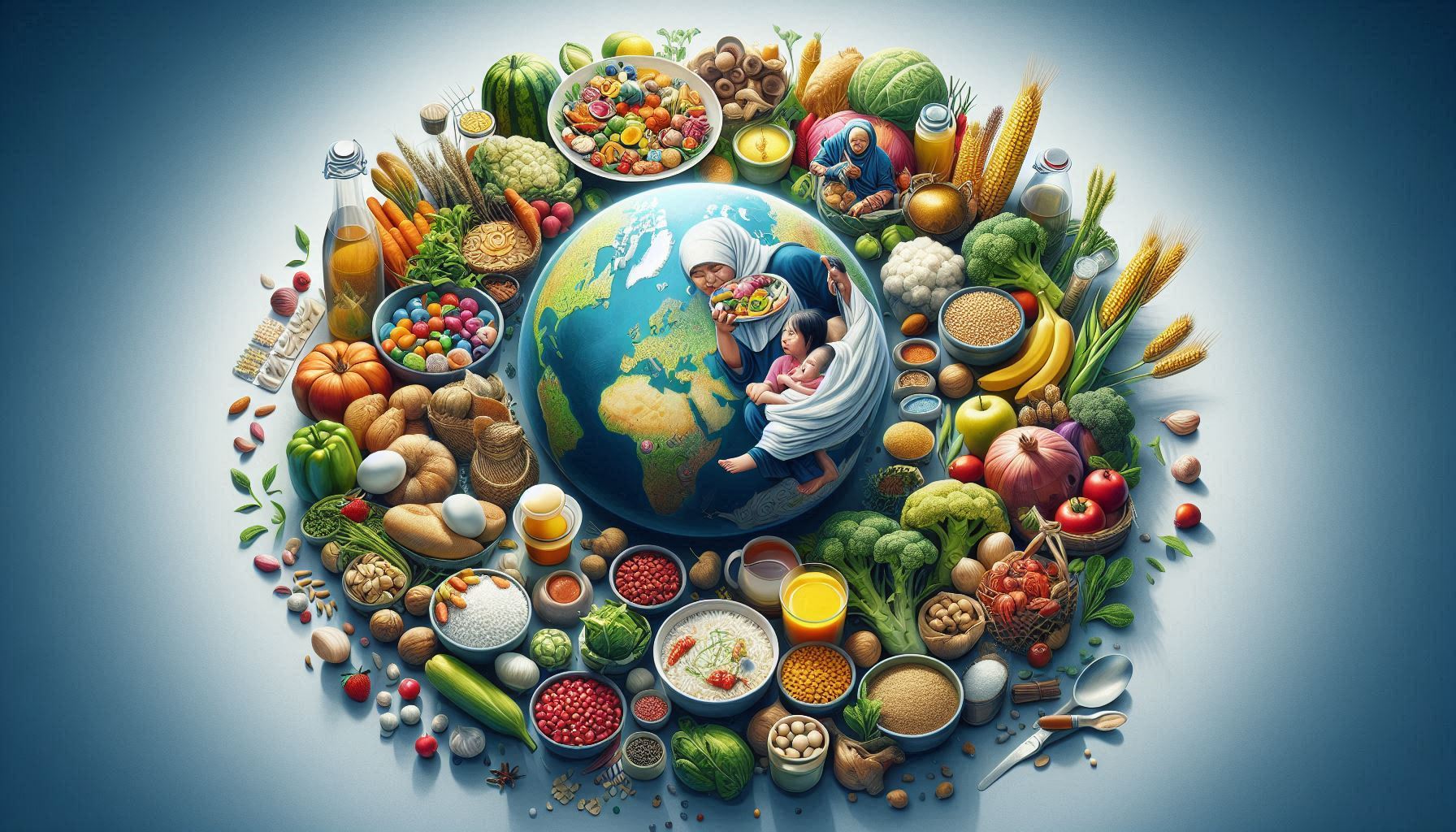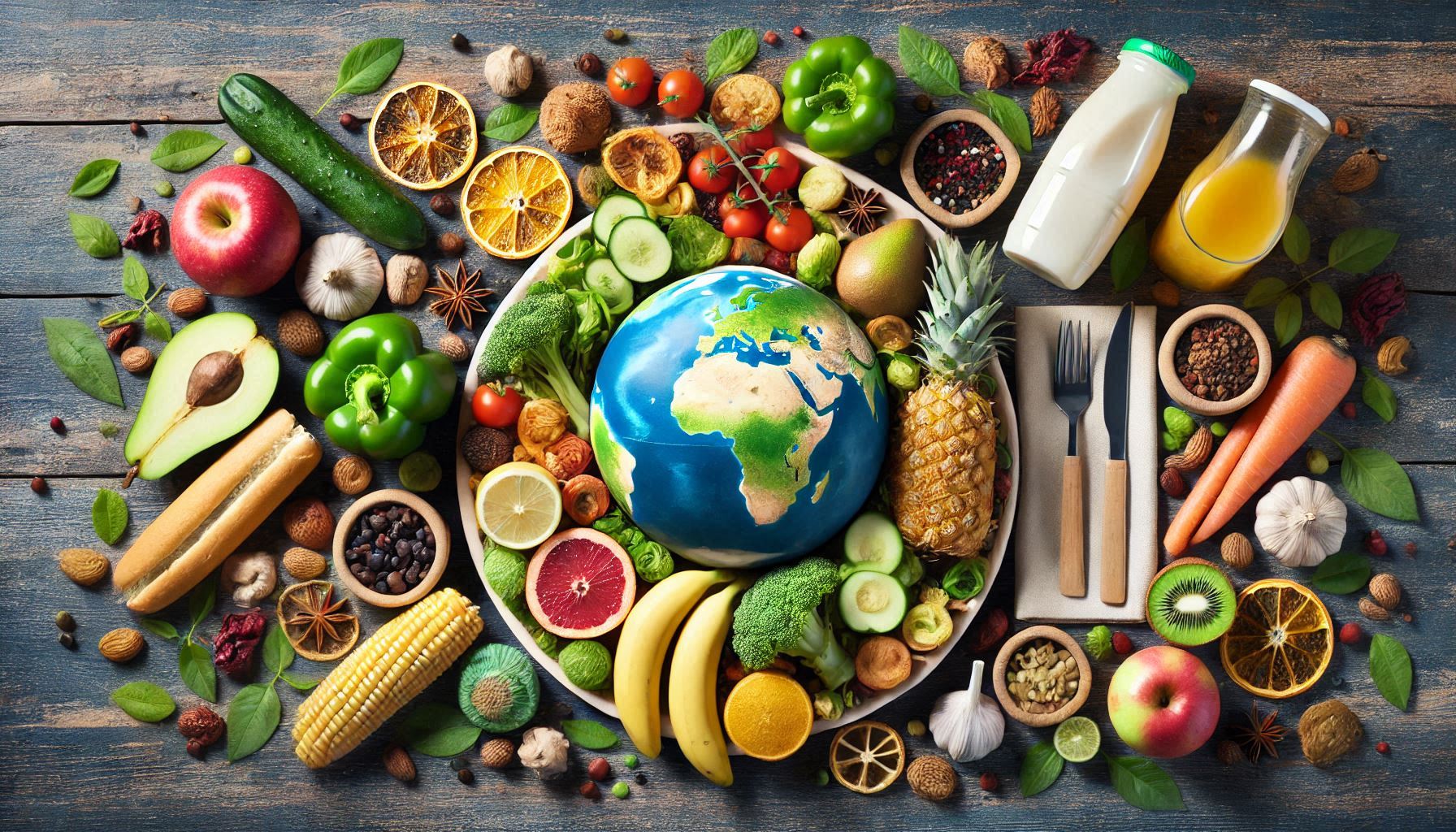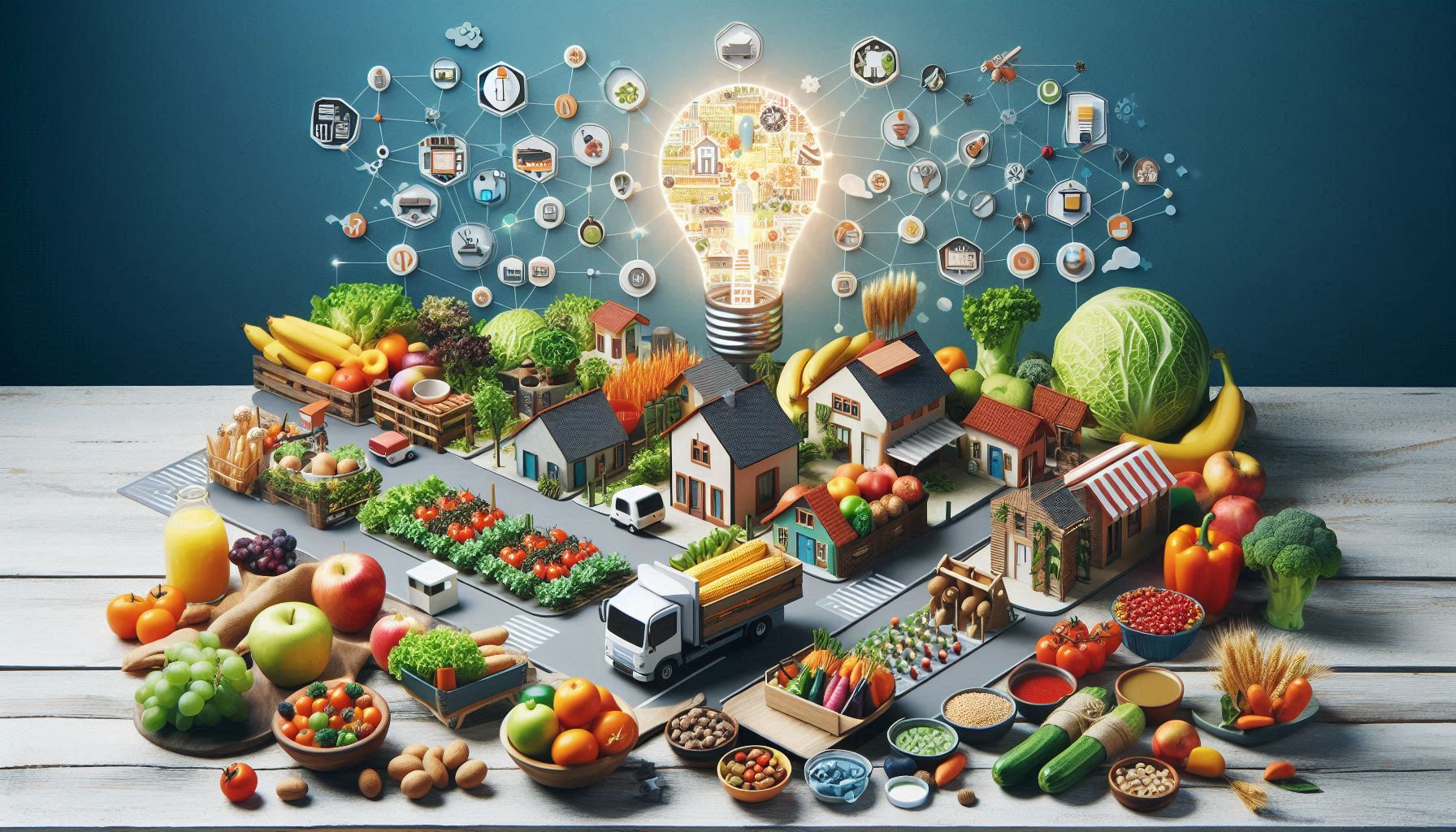Food security and nutrition are central to global development and the well-being of populations worldwide. For decades, hunger and malnutrition have remained significant barriers to progress, affecting millions of people, particularly in developing countries. Despite significant advancements in agricultural technologies, international aid, and public health initiatives, millions of individuals continue to experience food insecurity, undernutrition, and overnutrition. As the global population grows and environmental conditions become more unpredictable due to climate change, the challenge of providing sufficient, nutritious, and affordable food for all becomes more urgent.
The United Nations (UN) defines food security as a state where “all people, at all times, have physical, social, and economic access to sufficient, safe, and nutritious food that meets their dietary needs and food preferences for an active and healthy life.” This complex concept involves four main pillars: availability, access, utilization, and stability of food. Similarly, nutrition refers to the process by which our bodies obtain and use the nutrients from food to maintain health, promote growth, and prevent disease.
Today, over 800 million people around the world are hungry, while many more suffer from hidden forms of malnutrition. According to the World Health Organization (WHO), more than 2 billion people are affected by micronutrient deficiencies, such as lack of vitamin A, iron, or iodine, which impair immune function, cognitive development, and overall well-being. At the same time, obesity rates are rising, particularly in urban areas, contributing to a surge in non-communicable diseases (NCDs) such as diabetes, heart disease, and certain cancers.
Addressing the dual burden of hunger and malnutrition, therefore, requires a holistic approach that tackles both the immediate and long-term drivers of food insecurity and poor nutrition. In this article, we will explore the relationship between food security and nutrition, identify the factors contributing to global hunger and malnutrition, and discuss strategies and interventions aimed at improving food security and nutritional outcomes worldwide.
The Relationship Between Nutrition and Food Security
At its core, food security is about ensuring that people have access to adequate food. However, food security alone does not guarantee good nutrition. Nutrition is a more comprehensive concept that focuses on the quality of food and how it contributes to a person’s overall health. The goal is to ensure that people not only have enough food but also have access to a balanced diet that includes essential nutrients such as proteins, vitamins, and minerals.
Food security and nutrition are closely linked but distinct concepts. Food security addresses the availability, accessibility, and stability of food supplies, while nutrition is concerned with how the body uses the food consumed. To have food security, individuals must not only have enough food but also the right kind of food that meets their specific nutritional needs. For instance, even when calories are sufficient, a diet lacking in essential vitamins and minerals can lead to malnutrition, which can have long-term health consequences.
The World Food Summit in 1996 defined food security in terms of its four key dimensions:
- Availability: This refers to the physical presence of food in sufficient quantity and quality, whether it is locally produced, imported, or supplied through aid.
- Access: Access to food refers to an individual’s ability to acquire food through means such as income, social networks, and markets.
- Utilization: This is the ability of individuals to absorb and use nutrients from food effectively. Utilization is influenced by food safety, hygiene, and healthcare, as well as dietary diversity.
- Stability: Stability implies that food availability, access, and utilization are consistent over time and are not affected by fluctuations such as seasonal variation, economic crises, or environmental disasters.
Nutrition, therefore, is dependent not only on the quantity of food available but also on the diversity and quality of food that individuals can access. This can be seen in the increasing prevalence of both undernutrition and overnutrition, especially in vulnerable groups.
The State of Global Hunger and Malnutrition
The world has made significant progress in reducing hunger and malnutrition over the past few decades. The proportion of people living in extreme poverty has decreased, and food production has grown at a faster rate than population growth. However, the number of people suffering from hunger and malnutrition remains disturbingly high. According to the 2023 State of Food Security and Nutrition report by the FAO, an estimated 768 million people, or roughly 9.8% of the global population, were undernourished in 2022.
Malnutrition, including both undernutrition and overnutrition, is responsible for a range of health problems. Undernutrition leads to conditions such as stunting, wasting, and micronutrient deficiencies. According to UNICEF, approximately 149 million children under the age of five suffer from stunting, a condition that impairs growth and cognitive development. Wasting, characterized by low weight for height, affects about 45 million children under five and is a major contributor to child mortality.
Micronutrient deficiencies, such as a lack of vitamin A, iron, iodine, and zinc, affect billions of people, especially in low-income countries. These deficiencies can impair immune function, increase the risk of infections, cause developmental delays, and lead to anemia, which affects a significant proportion of women and children.
In addition to undernutrition, overnutrition is a growing global health concern. The rise in obesity, particularly in middle- and high-income countries, is linked to the consumption of energy-dense, nutrient-poor foods, often combined with sedentary lifestyles. Overweight and obesity have become significant risk factors for non-communicable diseases (NCDs), including heart disease, diabetes, and some cancers. In 2016, approximately 39% of adults globally were overweight, and 13% were obese.
This dual burden of malnutrition—underweight and overweight—has serious implications for public health systems and economies. Poor nutrition at both ends of the spectrum contributes to a range of chronic diseases, which in turn strain health services, reduce workforce productivity, and slow economic development.
The Drivers of Food Insecurity and Malnutrition
The causes of global hunger and malnutrition are multifaceted, involving a combination of economic, social, political, environmental, and cultural factors. Some of the primary drivers of food insecurity and malnutrition include:
- Poverty: Poverty is the root cause of food insecurity for millions of people around the world. People living in poverty are unable to afford sufficient and nutritious food, making them more vulnerable to both hunger and malnutrition. Poverty also limits access to healthcare, clean water, education, and other factors that contribute to well-being and good nutrition. The economic divide between wealthy and low-income populations continues to widen, and food insecurity is particularly pronounced in areas where poverty is most severe.
- Conflict and Political Instability: Armed conflict, civil wars, and political instability disrupt food production, distribution, and access. Conflicts often result in displacement, food shortages, and loss of livelihoods, creating environments where hunger and malnutrition thrive. Areas affected by long-term conflict, such as parts of Sub-Saharan Africa, the Middle East, and South Asia, experience higher levels of food insecurity. Refugees and internally displaced persons (IDPs) face particular challenges in accessing sufficient food, clean water, and healthcare, leading to widespread malnutrition.
- Climate Change and Environmental Stress: Climate change poses a growing threat to global food security. Rising temperatures, changing rainfall patterns, and extreme weather events—such as droughts, floods, and hurricanes—disrupt food production and make agricultural systems more unpredictable. Smallholder farmers, who are often the most vulnerable to climate change, face decreasing crop yields, loss of livestock, and increasing prices of food products. At the same time, the impact of climate change exacerbates poverty, pushing more people into food insecurity.
Environmental stress also affects biodiversity, making agricultural ecosystems more fragile and less resilient. The depletion of natural resources such as water and soil erosion further complicates efforts to achieve food security, particularly in regions dependent on rain-fed agriculture. - Unhealthy Food Systems and Diets: While food availability has generally improved, access to healthy and nutritious food remains a significant challenge in many parts of the world. Industrialized food systems often prioritize processed foods that are high in sugar, fat, and salt, leading to poor dietary habits and an increased risk of obesity and diet-related diseases. At the same time, rural populations in many low-income countries may lack access to a diverse range of nutrient-rich foods such as fruits, vegetables, dairy, and animal-based products.
The global prevalence of unhealthy diets has contributed to the rise in obesity, even in countries with high levels of hunger and poverty. Malnutrition thus exists in the form of “hidden hunger,” where individuals suffer from micronutrient deficiencies despite having enough calories. - Inadequate Healthcare and Sanitation: The ability to absorb and utilize nutrients is dependent on overall health, sanitation, and access to clean water. Poor healthcare systems, inadequate sanitation, and the spread of infectious diseases compromise the body’s ability to use food effectively, leading to malnutrition. For example, diarrheal diseases caused by poor sanitation can lead to nutrient loss and dehydration, particularly in young children. Inadequate maternal and child healthcare also contributes to high rates of stunting, wasting, and low birth weights.
The Role of Nutrition in Development
Addressing malnutrition and improving nutrition are critical to achieving sustainable development goals. Nutrition is a powerful determinant of human development and well-being. Malnutrition, whether in the form of undernutrition or overnutrition, impedes economic and social progress in several ways:
- Impact on Health and Mortality: Undernutrition, particularly in early childhood, leads to high rates of mortality and morbidity. Malnourished children are more susceptible to infections, experience delayed physical and cognitive development, and are more likely to suffer from chronic diseases later in life. According to the WHO, malnutrition is linked to almost half of all child deaths under the age of five.
At the same time, overnutrition and diet-related diseases are contributing to the growing burden of non-communicable diseases (NCDs). Obesity, for example, increases the risk of cardiovascular diseases, type 2 diabetes, and some cancers. NCDs are now the leading cause of death worldwide, with their prevalence increasing rapidly in low- and middle-income countries. - Impact on Economic Productivity: Malnutrition has a direct impact on economic productivity. Undernutrition, particularly in children, leads to lower cognitive development, which affects educational outcomes and, by extension, future economic productivity. The World Bank estimates that malnutrition costs the global economy up to $3.5 trillion annually in lost productivity, increased healthcare costs, and reduced income levels.
Obesity also has economic consequences, particularly in terms of healthcare costs. The treatment of diet-related diseases such as diabetes, heart disease, and hypertension places a significant burden on health systems and economies, particularly in countries where healthcare resources are limited. - Impact on Education: Malnutrition, especially micronutrient deficiencies, impairs cognitive function and learning abilities. Malnourished children perform poorly in school, which limits their future opportunities and perpetuates the cycle of poverty. School-based nutrition interventions, such as school meal programs, have been shown to improve educational outcomes and reduce absenteeism, helping children break the cycle of malnutrition and poverty.
Solutions to Address Hunger and Malnutrition
To tackle global hunger and malnutrition effectively, a multi-pronged approach is required. Solutions must address the root causes of food insecurity, improve access to nutritious food, and strengthen food systems. Below are some of the key strategies to address these challenges:
- Improving Agricultural Productivity and Sustainability: Investing in sustainable agricultural practices is essential for ensuring that food production can meet the growing demand for food. Supporting smallholder farmers through training, access to technology, better seeds, and irrigation systems can boost agricultural productivity and enhance food security. Promoting agroecological practices, which focus on preserving biodiversity, improving soil health, and reducing dependence on chemical fertilizers, can also contribute to more resilient food systems.
- Expanding Social Protection Programs: Social safety nets, such as food assistance, cash transfers, and school meal programs, are critical for helping vulnerable populations access food. These programs provide an immediate buffer during crises and are essential in reducing food insecurity. Expanding and strengthening social protection systems can help break the cycle of poverty and malnutrition by ensuring that all individuals, regardless of income, can afford nutritious food.
- Promoting Nutrition-Sensitive Interventions: Nutrition-sensitive approaches focus on addressing the underlying causes of malnutrition, such as poverty, inadequate sanitation, and poor maternal and child nutrition. Programs that promote breastfeeding, provide micronutrient supplementation, and educate communities about healthy diets are essential in improving nutrition outcomes. In addition, improving maternal and child healthcare, water and sanitation, and education can help prevent malnutrition before it occurs.
- Mitigating Climate Change: Addressing climate change is essential for food security. Climate-resilient agricultural practices, including drought-resistant crops, improved irrigation techniques, and climate-smart farming, can help reduce the impact of climate change on food production. At the same time, reducing greenhouse gas emissions and promoting sustainable land-use practices are critical for the long-term sustainability of food systems.
- Strengthening Global Partnerships and Policy Coordination: The international community must work together to address global hunger and malnutrition. Governments, international organizations, civil society groups, and the private sector all have a role to play in improving food security and nutrition. Policy coordination is needed at national and international levels to ensure that food systems are inclusive, sustainable, and resilient. Multilateral initiatives such as the Sustainable Development Goals (SDGs) provide a framework for global collaboration.
Conclusion
Global hunger and malnutrition are among the most urgent challenges of our time. Achieving food security and improving nutrition are critical for advancing human development, promoting health, and reducing poverty. While there has been progress in reducing hunger and improving food availability, much more needs to be done to ensure that all people have access to sufficient, nutritious food. By addressing the root causes of food insecurity, investing in sustainable agriculture, promoting good nutrition, and strengthening healthcare and social protection systems, we can create a world where no one goes hungry, and everyone can achieve their full potential. The fight against hunger and malnutrition requires coordinated efforts from governments, organizations, and individuals, and it is a responsibility we all share.
SOURCES
FAO. (2023). The State of Food Security and Nutrition in the World 2023: Safeguarding food security in a changing climate. Food and Agriculture Organization of the United Nations.
UNICEF. (2022). The State of the World’s Children 2022: Children, food and nutrition: Growing well in a changing world. United Nations Children’s Fund.
WHO. (2023). Global Health Observatory (GHO) data on nutrition. World Health Organization.
World Bank. (2019). The costs of malnutrition: Global and regional estimates of the economic impact of child stunting and other forms of malnutrition. World Bank Group.
FAO, IFAD, UNICEF, WFP, & WHO. (2021). The state of food security and nutrition in the world 2021: Transforming food systems for food security, improved nutrition, and affordable healthy diets for all. Food and Agriculture Organization of the United Nations.
Smith, L. C., & Haddad, L. (2000). Explaining child malnutrition in developing countries: A cross-country analysis. International Food Policy Research Institute.
Global Nutrition Report. (2021). The Global Nutrition Report 2021: The state of global nutrition. Global Nutrition Report.
Headey, D. D., & Ecker, O. (2013). The socio-economic determinants of child malnutrition in developing countries: A review of the causal pathways. Food Security, 5(4), 493-504.
Norris, L. (2018). Food security and food systems in the context of climate change. Earthscan.
Bates, S., & Lindahl, L. (2017). *And Understanding food security: Theory and practice. Wiley-Blackwell.
Swinnen, J.F.M., & McDermott, J. (2018).*AgricultureAgricultural and food policy in developing countries: The political economy of food security. Oxford University Press.
Popkin, B. M., & Gordon-Larsen, P. (2004). The nutrition transition: Worldwide obesity dynamics and their determinants. International Journal of Obesity, 28(3), 24-27.
FAO. (2015). *IInternational guidelines for the development of national food-based dietary guidelines. Food and Agriculture Organization of the United Nations.
Ruel, M. T., & Alderman, H. (2013). Nutrition-sensitive interventions and programmes: How can they help to accelerate progress in improving maternal and child nutrition?. The Lancet, 382(9891), 536-551.
Koh, K. (2017). Addressing malnutrition in a complex world: Connecting food systems and health through the UN’s Sustainable Development Goals. Oxford University Press.
IFPRI. (2022). 2022 Global food policy report: Transforming food systems after COVID-19. International Food Policy Research Institute.
HISTORY
Current Version
November 26, 2024
Written By:
SUMMIYAH MAHMOOD




